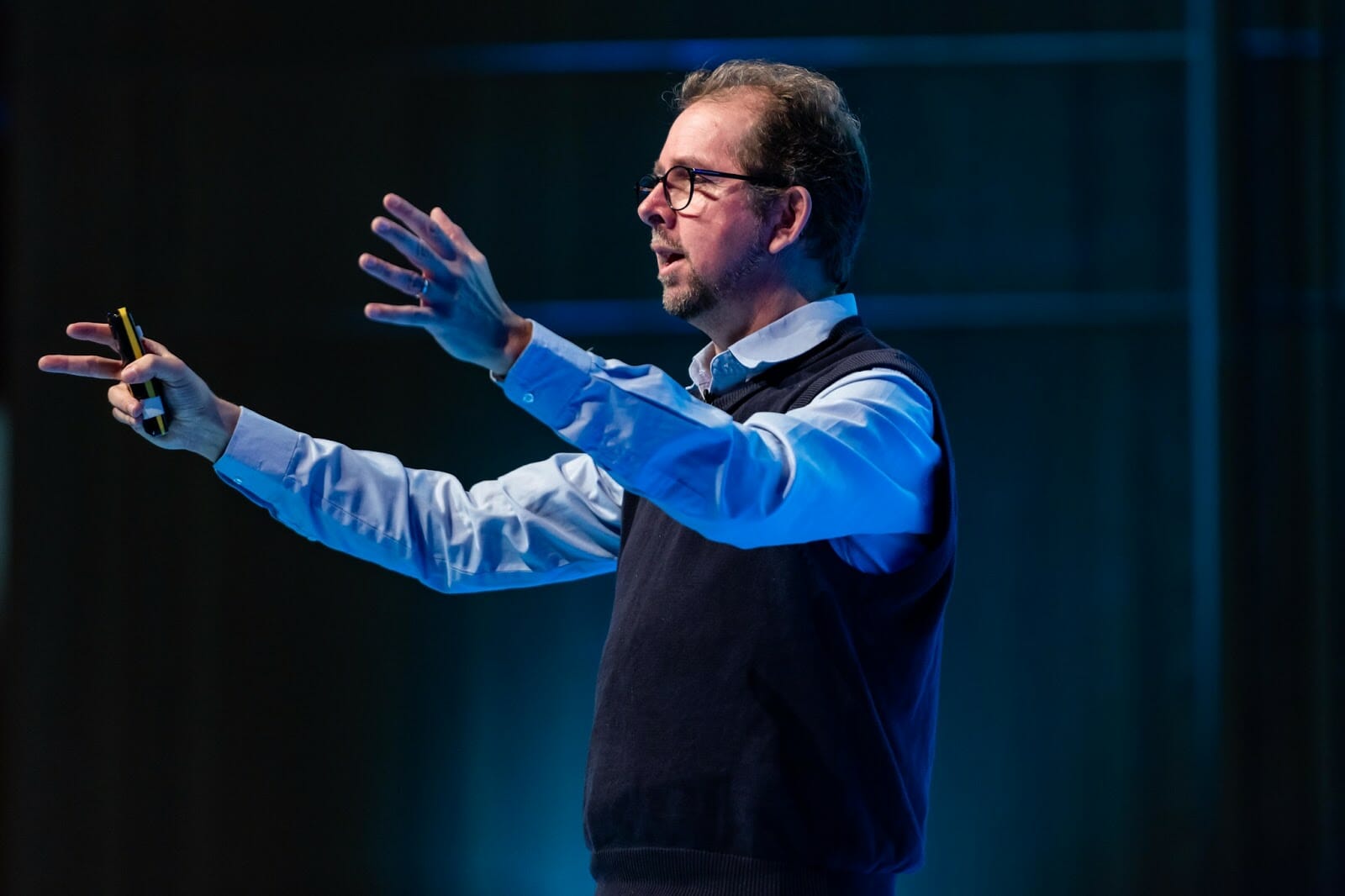Minimise the Gap Between Maker and User by Henrik Kniberg [Mind the Product]

In this keynote from #mtpcon London, Henrik Kniberg, an organisational consultant and developer at Crisp in Stockholm, discusses how creating great products requires us to reduce the gap between makers and users.
Key points:
- If we want to create products people love (like Lego, Minecraft and Spotify) we must reduce the gap between makers and users
- Reducing the gap means limiting handoffs, using lots of different data sources, building empowered autonomous teams, committing to radical transparency, and focusing on curiosity rather than pride
Henrik explains that in our jobs we need to make products that delight users and achieve an impact. They have to help people, help society and provide value over a long period of time. And, in order to build products that do this, we need to reduce the space between those making products and those who will use them.
This space can be made up of handoffs, time, or processes.
At Lego, it’s baked into the way they design products, and all prototypes are tested with children. No matter how long a designer has been working there, they put their ideas to kids before the product gets released.

Everyone Makes Mistakes, Great Companies Learn From Them
However, even people at Lego make mistakes. For example, 1,000 man years were spent on the Lego Universe game but it was just taken down after just two years. But, like all great companies, Lego learned from this experience and used it to change the way it works.
In contrast, Minecraft’s first version was built in 12 man days. It was then released over 100 times in the first year – basing everything on user feedback. In the future, it would be sold to Microsoft for $2.5 billion.
So how can we reduce the gap between those making products and those using them?
1. Releasing Regularly Reduces Risk
Lego didn’t test anything until it released the whole package, which meant that all the risk had built up. In contrast, Minecraft, reduced its risk by releasing regularly and changing as it got more and more information from users.
Spotify started with a whole set of assumptions that it worked hard to test. Some were proved false – like the fact that people would no longer pay for music. However, it was baked into the culture to keep checking assumptions by releasing changes regularly.

2. Use Different Sources of Feedback to Make Decisions
When Minecraft releases a feature, millions of people start using them immediately. The company uses open bug tracking and forums to minimise the distance between makers and users.
Spotify tends towards A/B Testing with 1% and then releases based on its impact measures.
Henrik says product managers should use an approach that fits their culture (based on whether you want to see people as data or individuals).
There are benefits of all approaches but data, user feedback, and gut feel should all be signals you use to make decisions.
3. Break Things Into Smaller Pieces
Starting a big project is daunting but Henrik’s advice is to find a single element, feature, or industry to build against rather than tackle everything at the beginning. It means you can spend more time working on this single version and its release won’t be such a dramatic event. You can be sure this part works, rather than being unsure if the whole thing works together.

4. Autonomous Teams Make Better Decisions
To drive the most autonomous teams, you need to reduce the number of handoffs between them and the people using their products. Quality problems almost always arise because the people who make the products can’t see them being used properly.
Adding people to improve the quality of your products – like testers or quality assurance – simply pushes the problem down the delivery chain. However, if you bring these people together, then you can start to have more interesting conversations about the types of products you could build.
5. Radical Transparency Helps Teams to Make Good Decisions
If you don’t know what’s happening in the rest of your organisation, it can limit your understanding of how your work affects everyone and everything else. Even if you have great visions and strategies, if you are not aligned with the rest of the business you’re bound to become inefficient.
The use of demos can combat this.
Demos can help to ensure that everyone collaborates. They force people to communicate what they’re building and mean that people have to be open to as many people as possible – everyone becomes invited to influence the product and plan. You should also remember to share with people who work remotely so that they can comment too.

6. Curiosity is Better Than Pride
People are naturally proud of what they build, but pride can slow a product down if you won’t release anything until it’s 100% perfect.
Asking questions about users and their context is better than focusing purely on what’s being delivered. It forces makers to build the right products rather than what they think is the right product.
In summary, Henrik’s message is simple. Great products can be made by teams who break things down and avoid the temptation to tackle everything at once. They require regular releases to reduce risk, along with better collaboration and communication. It’s all about teamwork!
The post Minimise the Gap Between Maker and User by Henrik Kniberg appeared first on Mind the Product.
Source: Mind the Product https://www.mindtheproduct.com/minimise-the-gap-between-maker-and-user-by-henrik-kniberg/

Post a Comment